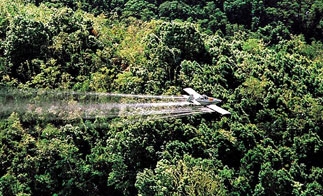A forthcoming UN report will say that the area under coca cultivation in Colombia has increased for the first time in five years, up to 64,000 hectares, reported El Tiempo.
According to the newspaper, the Colombian government recorded a slight increase in the illegal crop last year, from 62,000 to 64,000 hectares. The figure will be released in a forthcoming report from the United Nations’ (UN) Integrated Illicit Crops Monitoring System (SIMCI), El Tiempo said.
According to the report, the UN document will say that 54 percent of the country’s coca cultivation is concentrated in the provinces of Nariño, Guaviare and Putumayo. These are·three areas where the government has struggled to assert its authority for many years.
InSight Crime Analysis
The figure cited by El Tiempo, of 62,000 hectares of coca cultivation in 2010, is higher than the 57,000 given in the 2011 UN World Drug Report, because it was adjusted for the presence of small fields.
If the adjusted figure is correct, than the increase would only be some 3 percent, which is not particularly significant. Even if the increase is closer to 12 percent, as suggested by the figure in 2011’s World Drug Report, this is not a necessarily an indication that Colombia’s drug policy has become less effective. Estimating illicit crops is a notoriously unreliable business — in 2009, the US State Department’s estimate for Colombia’s coca cultivation was almost double that of the UN.
By the UN’s figures, Colombia’s coca crops have declined massively in recent years, down from 160,000 hectares in 1999 to 68,000 in 2009. The fall is due in part to crop eradication schemes, including spraying pesticides from the air. While this is touted as a victory for security efforts, aerial eradication comes with massive social costs, and is unlikely to turn farmers away from coca-growing in the long term even if it reduces the area of crops in the short term.
In addition, an expansion in the area under coca cultivation would not necessarily mean more drugs were being produced. In Colombia, sustained eradication campaigns have forced farmers to move and replant coca fields, meaning that their coca plants are less mature and lowering yielding.
However, the UN figures would play into the narrative being pushed by critics of the government, including former President Alvaro Uribe, who say that the administration of Juan Manuel Santos is letting the security gains of the last decade slip away. This could mean that Santos is forced to step up eradication, whether or not this is a good use of resources, in order to avoid criticism.
A representative of the UN’s Global Illicit Crop Monitoring Programme was not able to confirm El Tiempo’s figures, but said that the organization’s report containing cultivation figures for 2011 would be released in mid July.

